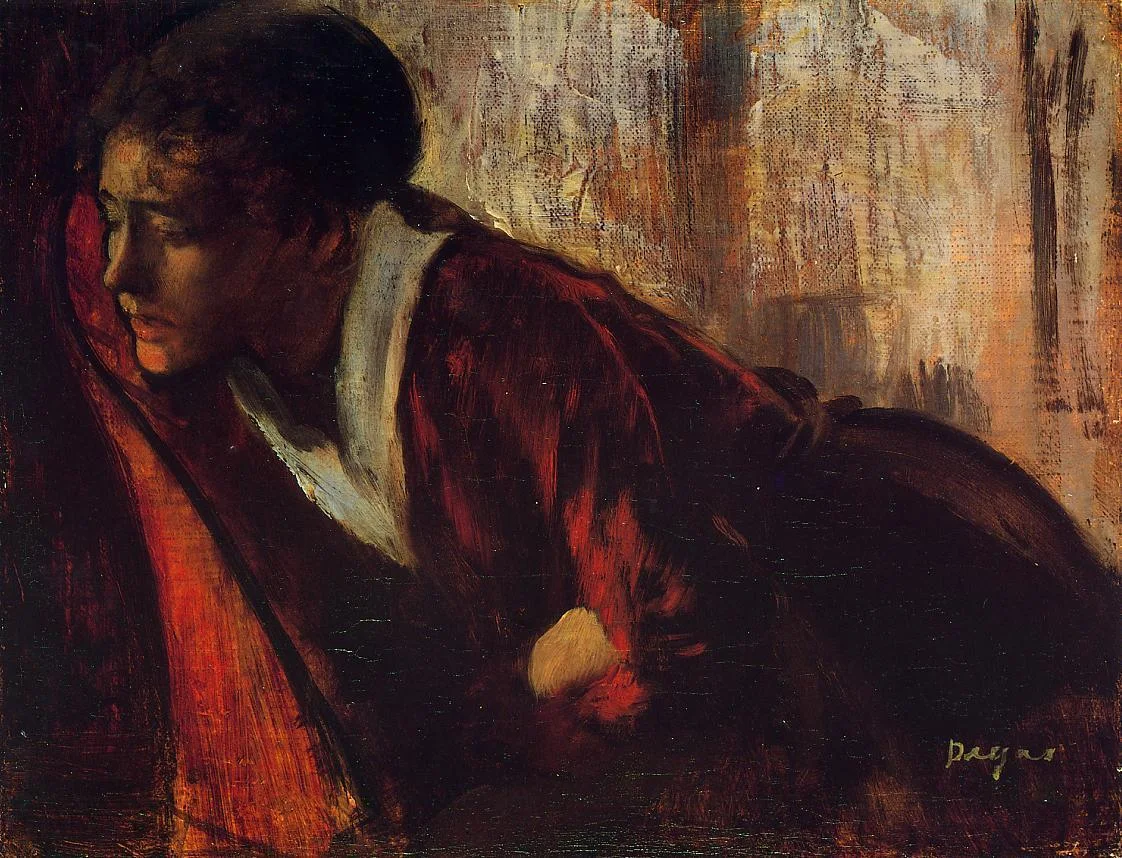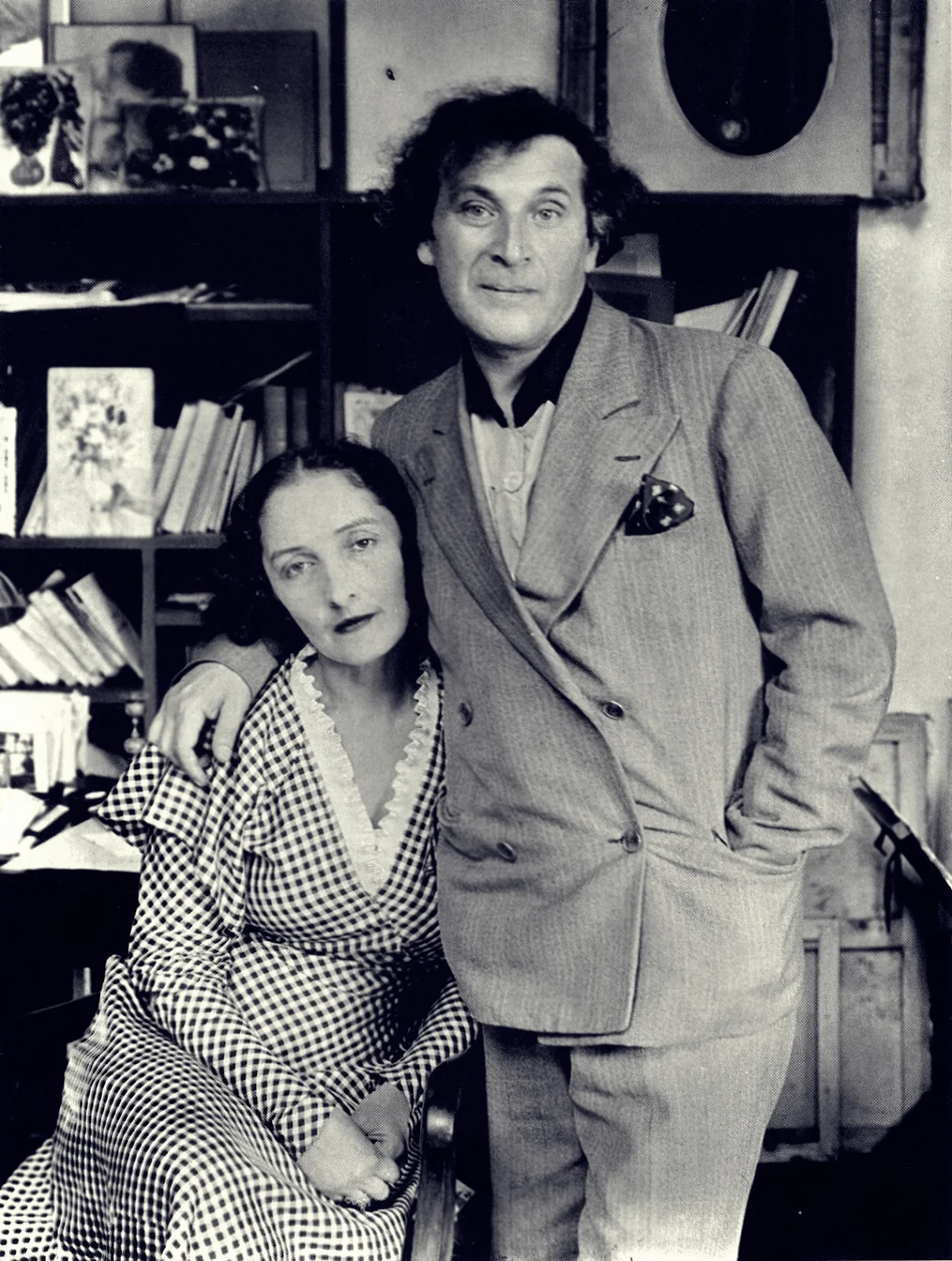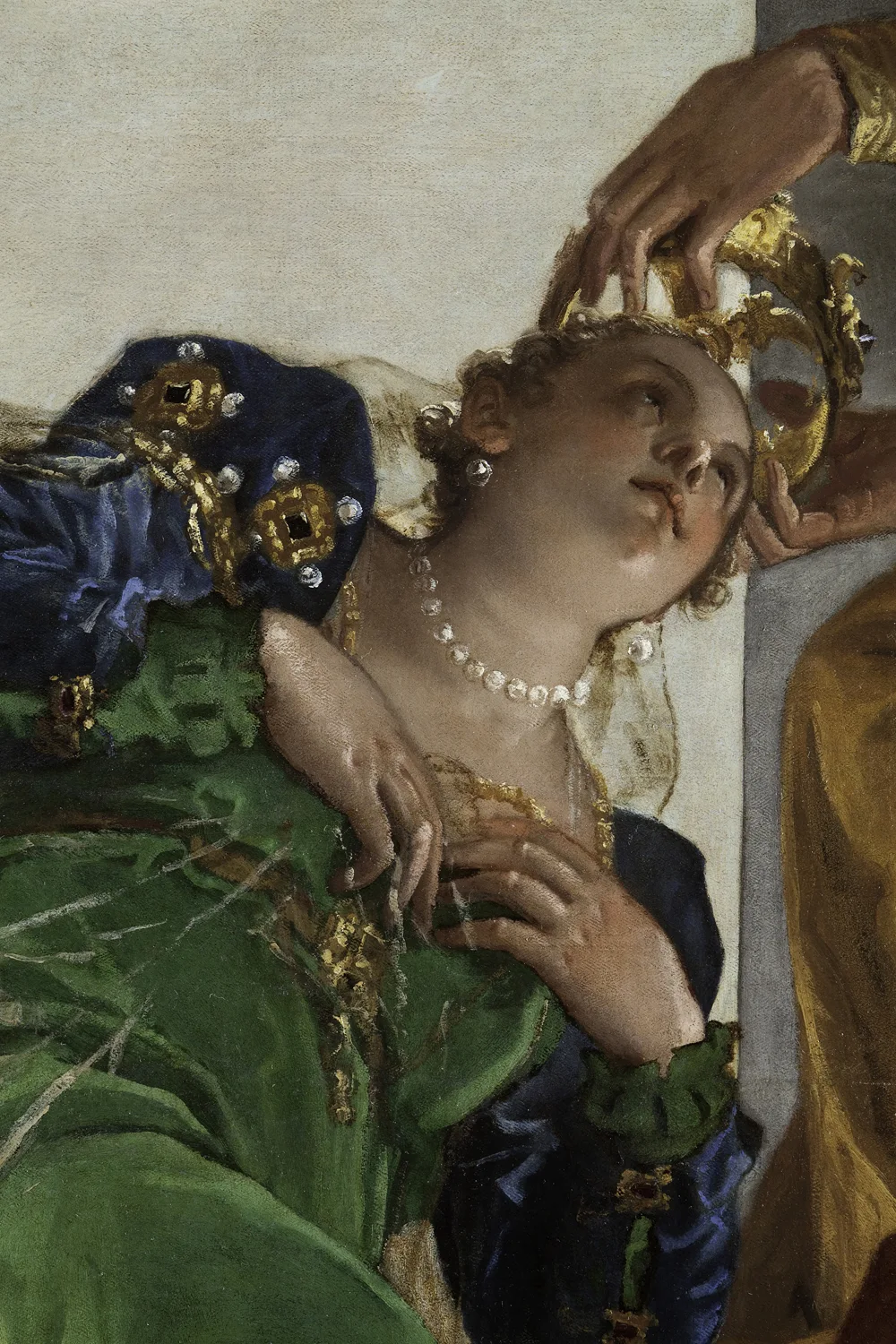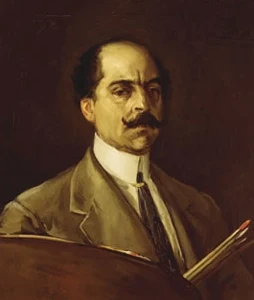This sculpture was born of Salvador Dalí's respect for Sir Isaac Newton and his discovery of the law of gravity, represented by the famed falling apple. Dalí has pierced the figure with two large spaces: one which portrays the absence of Newton's unique physical body, while the other space clearly displays the lack of his singular mind.
Home » Archivio per marzo 2016

Salvador Dali | Surrealist Newton, 1977

Ugo Attardi | Abstract Expressionism painter /sculptor
Ugo Attardi (1923-2006), one of the most versatile Italian artists, died the morning of July 21 at the age of 83 in Rome.
Attardi´s fame crossed borders as a well known painter, sculptor and writer.
Ugo Attardi was born in Genoa and grew up in Palermo.

Franz Borghese | Cubist / Symbolist painter /sculptor
Italian painter and sculptor Franz Borghese was born in Rome in 1941.
He attended Rome’s Fine Arts Academy and Rome’s Artistic Lyceum together with Purificato, Capogrossi, Maganzini and Turcato.
Multiple techniques were used by the artist: oil and gouache, ink and watercolour, printing and sculpture.
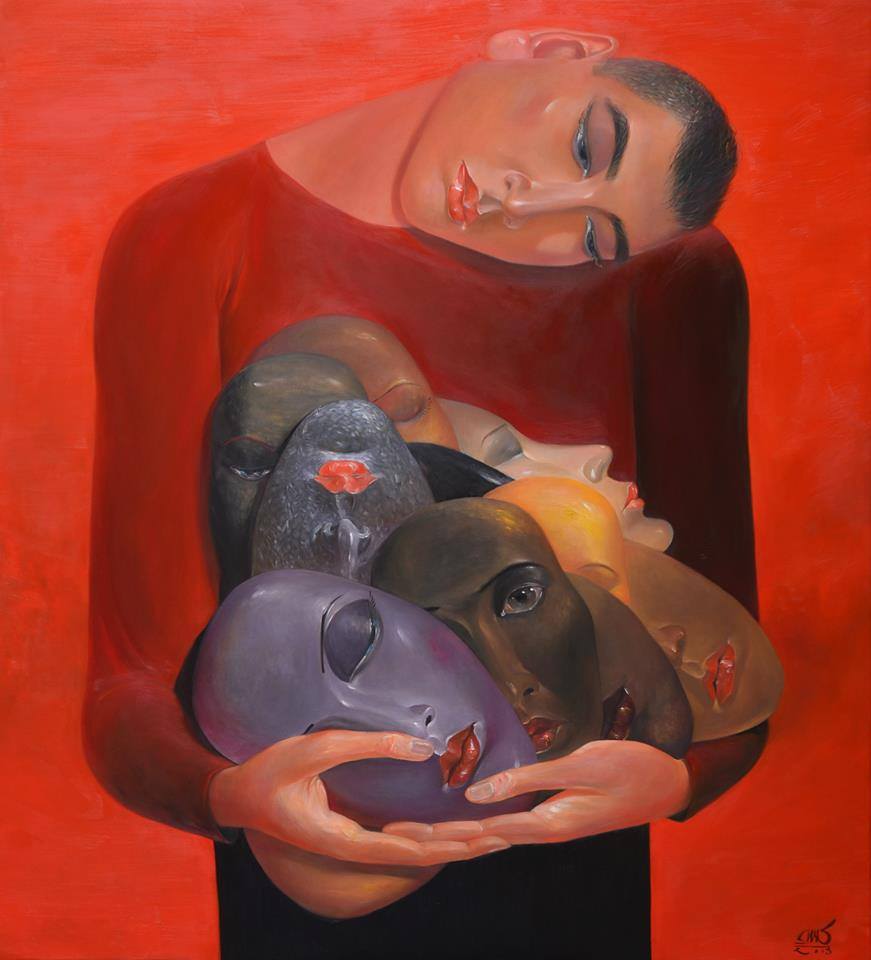
Nguyen Khac Chinh, 1984 | Symbolist / Surrealist painter
With a harmonious combination of colours, both modern and imbued with Eastern culture, the set of paintings entitled "The Life of Mannequins" by artist Nguyen Khac Chinh brought to viewers a unique, interesting perspective on life and humans in a contemporary art space.
Born in 1984 in Hanoi, Vietnam, Nguyen Khac Chinh graduated from the Hanoi University of Fine Arts in 2006, and is a highly skilled artist in oil painting thanks to his participation in group exhibitions since he was a student.
During his years of studying and taking part in art exhibitions of different forms, such as installation, performance, video art, oil painting and lacquer painting, he accumulated a thorough knowledge and experience of art.

Edgar Degas: "Copiare e ricopiare i maestri.."
Per comprendere adeguatamente il profilo artistico di Degas è indispensabile coglierne le connessioni con gli immensi depositi culturali del passato. Degas, infatti, fu meno disposto di altri suoi colleghi ad accantonare l'eredità dei grandi maestri, ai quali si riferì sempre con appassionata devozione. Non a caso egli considerava i musei come il luogo congeniale alla formazione di un artista, ed a tutti coloro che gli chiedevano consigli per migliorare le proprie tecniche egli ricordava caparbiamente l'importanza di copiare i capolavori del passato.
È comunque considerato uno de maestri dell'Ottocento ed ha lasciato il segno con il suo stile innovativo.
Una delle sue massime:
«Bisogna copiare e ricopiare i maestri, e soltanto dopo aver fornito tutte le prove di un buon copista vi si potrà ragionevolmente permettere di dipingere un ravanello dal vero» - Edgar Degas.
Lo stesso Degas, stimolato dai numerosi viaggi in Italia e dall'erudizione del padre, meditò con molta attenzione sulle pitture conservate al Louvre, e soprattutto sui primitivi del Rinascimento.

Edgar Degas e l'Impressionismo
Degas viene giustamente inserito nella genealogia dell'Impressionismo.
Egli, in effetti, partecipò con grande assiduità a tutte le mostre del gruppo, fatta eccezione per quella del 1882, e come i suoi colleghi nutriva un'appassionata devozione per le opere di Édouard Manet, pittore che per primo si era emancipato dalle piacevolezze borghesi ed era approdato ad una grande libertà espressiva e ad una costante quanto disinibita rappresentazione della sua contemporaneità.

Marc Chagall | Birthday / Il Compleanno, 1915
"Do not move. Stay just as you are", he commanded with what I can only call hot urgency...
He put a fresh canvas on his easel, snatched up brushes, and flung himself at it so passionately that the easel shook. Dabs of red, blue, white, and black flew through the air and swept me up with them. Up and up. I looked down and he was standing on tiptoe on one foot. He lifted me off the ground, leapt up himself, and glided with me up to the ceiling..
He put a fresh canvas on his easel, snatched up brushes, and flung himself at it so passionately that the easel shook. Dabs of red, blue, white, and black flew through the air and swept me up with them. Up and up. I looked down and he was standing on tiptoe on one foot. He lifted me off the ground, leapt up himself, and glided with me up to the ceiling..
Marc and first wife Bella Rosenfeld Chagall, Paris, 1929 by André Kertész

Edgar Degas | Horse racing /Corse di cavalli
French Impressionist painter, Edgar Degas (1834-1917), began painting scenes with horses in the 1860s.
For biographical notes -in english and italian- and other works by Degas see Edgar Degas | Realist/Impressionist painter and sculptor.
Other from Edgar Degas:
- Edgar Degas | Landscapes.
- Edgar Degas | Drawing.
- Edgar Degas al Metropolitan Museum.
- Edgar Degas | Sculpture.
- Edgar Degas & Mary Cassatt.
- Edgar Degas ~ The Bather series.
- Edgar Degas ~ The Impressionist Ballet dancers.
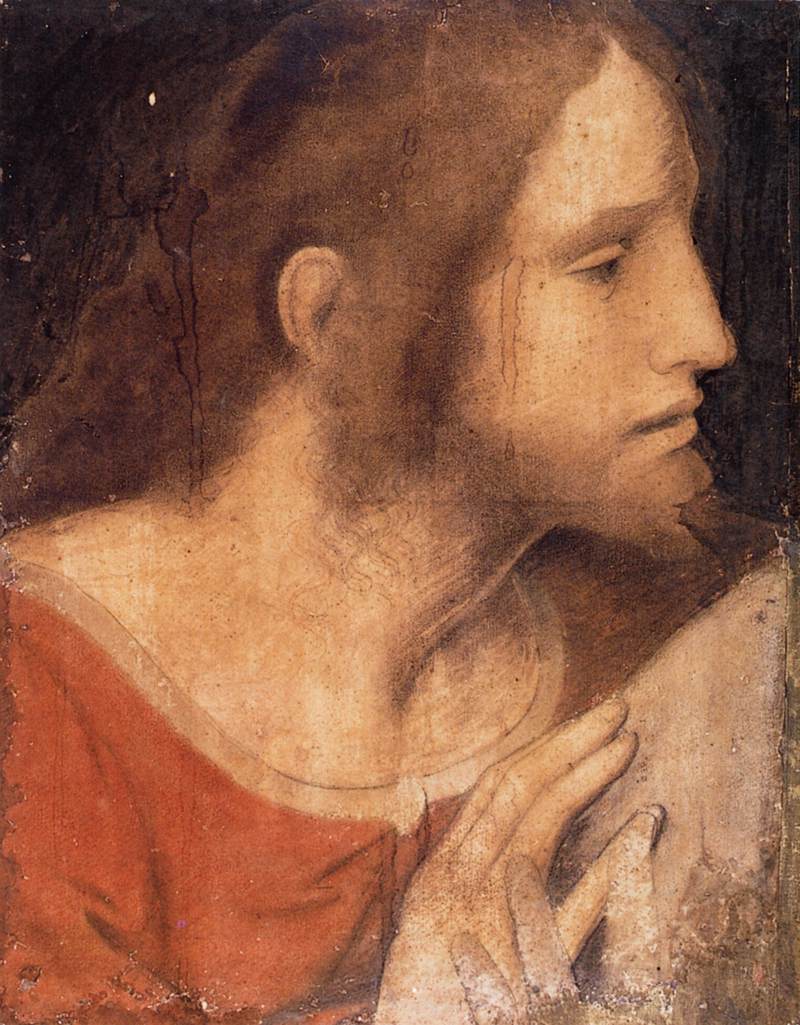
Leonardo da Vinci | Escusazione dello Scultore
Trattato della Pittura
Parte prima | Capitolo 37
Dice lo scultore, che s'esso leva piú marmo che non deve, non può ricorreggere il suo errore, come fa il pittore; al quale si risponde, che chi leva piú che non deve non è maestro, perché maestro si dimanda quello che ha vera scienza della sua operazione.
Risponde lo scultore, che lavorando il marmo si scopre una rottura, che ne fu causa essa e non il maestro di tale errore; rispondesi tale scultore essere in questo caso come il pittore a cui si rompe ed offende la tavola donde egli dipinge.


Edgar Degas | Landscapes
Edgar Degas (1834-1917) was a French artist famous for his paintings, sculptures, prints and drawings.
For biographical notes -in english and italian- and other works by Degas see Edgar Degas | Realist/Impressionist painter and sculptor.
Other from Edgar Degas:
For biographical notes -in english and italian- and other works by Degas see Edgar Degas | Realist/Impressionist painter and sculptor.
Other from Edgar Degas:
- Edgar Degas al Metropolitan Museum.
- Edgar Degas | Sculpture.
- Edgar Degas & Mary Cassatt.
- Edgar Degas | The Bather series.
- Edgar Degas | The Impressionist Ballet dancers.
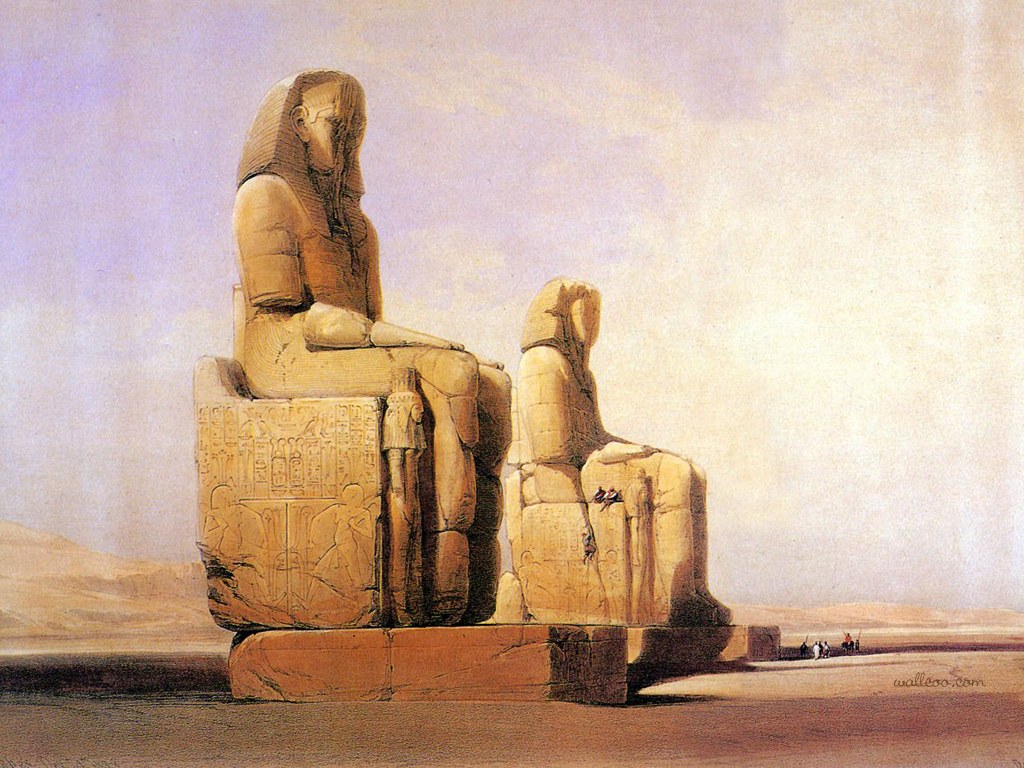
David Roberts RA | Romantic Orientalist painter
Artist David Roberts and Near Eastern Archaeology
by Dr. Patrick Hunt
Scottish artist David Roberts (1796-1864) was instrumental in helping to stimulate a growing fascination with the Near East by Europeans, especially within British society where biblical accounts of the rise and fall of empires were familiar, as much intellectual fare as anything else and staple bread and butter for religious imagination. The Romantic Movement’s eschewing of Enlightenment ideals turned instead to exotic themes and ruins, also replacing Neoclassicism with Orientalism.

Giorgione | Judith, 1504 | Hermitage Museum
Author: Giorgione
Painting, Oil on canvas, 144x68 cm
Origin: Italy, 1504
Personage: Judith
Style: Renaissance
Source of entry: Collection of baron L.A. Crozat de Tierra, Paris, 1772
School: Venetian
Location: Hermitage, Saint Petersburg
Theme: The Bible and Christianity

Jinnie May | Abstract Watercolour painter
Jinnie May has always had an appreciation for art, but it wasn’t until she retired in 2000 that she began to seriously pursue art. Currently Jinnie is interested in the use of watercolor for its spontaneity, portability and indecisiveness. Her initial inspiration comes from studying California Watercolor artists from the 1940’s and 50’s, who painted genre paintings on large paper using big brushes and bold colors.

Correggio | Mannerist painter
Correggio, byname of Antonio Allegri (born August 1494, Correggio [now in Emilia-Romagna, Italy]-died March 5, 1534, Correggio), most important Renaissance painter of the school of Parma, whose late works influenced the style of many Baroque and Rococo artists.
His first important works are the convent ceiling of San Paolo (c. 1519), Parma, depicting allegories on humanist themes, and the frescoes in San Giovanni Evangelista, Parma (1520-23), and the cathedral of Parma (1526-30).
The Mystic Marriage of St. Catherine (c. 1526) is among the finest of his poetic late oil paintings.

Paolo Veronese | Assessment
An artist's biography of Paolo Veronese (1528-1588) was included in the second edition of the Lives of the Most Excellent Painters, Sculptors and Architects (1568), by Giorgio Vasari, with improved coverage of the painters of the Venetian school.
A fuller biography of Veronese had to await Le maraviglie dell'Arte ovvero, Le vite degli Illustri Pittori Veneti and dello Stato (1648), by Carlo Ridolfi, a compilation of the Venetian School painters.
Ridolfi said that Veronese's painting of The Feast in the House of Levi (1573) is "by far, the most important source for our knowledge of his art", because "it gave rein to joy, made beauty majestic, made laughter, itself, more festive".

Bartholomeus Spranger (1546-1611)
Bartholomaeus Spranger, also spelled Bartholomeus Sprangers, or Sprangerson (March 21, 1546, Antwerp, Hapsburg Netherlands-August 1611, Prague), Antwerp painter noted for his paintings of nudes executed in the late Mannerist style.
In his efforts to develop a Northern artistic canon of the human figure, Spranger employed mannered poses, slender, elongated bodies, and a gleaming, brittle texture in his work.
The figures smile invitingly, and the influence of Parmigianino and Correggio is evident in their voluptuous contours.

Pablo Picasso: "La pittura è solo un altro modo di tenere un diario"
• "I computer sono inutili. Ti sanno dare solo risposte".
• "Computers Are useless. They Can Only Give You Answers".
• "La pittura è solo un altro modo di tenere un diario".
• "Painting is just another way of keeping a diary".
• "Ogni atto di creazione è, prima di tutto, un atto di distruzione".


Jacob Ferdinand Saeys | Architectural Fantasies painter
Jacobus Ferdinandus Saey or Jacob Ferdinand Saeys (1658 - after 1726) was a Flemish painter who specialized in architectural paintings depicting gallant companies amidst imaginary Renaissance and Baroque palaces and buildings. After starting his career in Flanders, he moved to Vienna, where he stayed for the rest of his life.

Salvador Dali and the Science
Dalí was a versatile artist. Some of his more popular works are sculptures and other objects, and he is also noted for his contributions to theater, fashion, and photography, among other areas.
Dalí's life-long interest in science and mathematics was often reflected in his work. His soft watches have been interpreted as references to Einstein's theory of the relativity of time and space.
Images of atomic particles appeared in his work soon after the atomic bombing of Hiroshima and Nagasaki and strands of D.N.A. appeared from the mid-1950s.
In 1958 he wrote in his Anti-Matter Manifesto: "In the Surrealist period, I wanted to create the iconography of the interior world and the world of the marvelous, of my father Freud. Today, the exterior world and that of physics have transcended the one of psychology. My father today is Dr. Heisenberg".
The Disintegration of the Persistence of Memory (1954) harks back to The Persistence of Memory (1931) and in portraying that painting in fragmentation and disintegration has been interpreted as a reference to Heisenberg's quantum mechanics.

Matthias Grünewald | Renaissance painter
Matthias Grünewald (1475-1528) whose real name was Mathis Gothart, called Nithart or Neithardt, was a major figure in a generation of great northern german Renaissance painters that also included Albrecht Dürer, Lucas Cranach and Albrecht Altdorfer.
Grünewald remained relatively unknown until the 20th century; only about 13 of his paintings and some drawings survive.
His present worldwide reputation, however, is based chiefly on his greatest masterpiece, the Isenheim Altarpiece c.1513-15, which was long believed to have been painted by Dürer.

Rafael Espitia, 1967 | Surrealist painter
Born in Cartagena, a port city on Colombia’s Caribbean coast, the artist began his career at an early age during the late 60’s and 70’s.
At age 17 he was already studying at the Art Students League of New York.
Additionally, he studied art and history of arts in Bogotá and Madrid, receiving many awards and recognition.
Rafael Espitia is a renowned Columbian contemporary artist who has spent last thirty years honing his unique style of colorful surrealism.
His art ranges from cartoonish pop-art and black and white images of celebrities to bikini models painted in some mythical, cosmic atmospheres.

Karin Broos, 1950 | Photorealism Figurative painter
Swedish artist Karin Broos trained at the Royal Academy St. Joost in S’Hertogenbosch in the Netherlands, but has lived and worked as an artist in Värmland since 1975.
Karin Broos painting is formulated placid and with no excess. Rust red water, curls around, rests inaudibly reflective, pours slowly over a floating female body, inviting, releasing, unsafe.
There is a psychological intesity in Broos paintings, a state that grips and never letting go.

Joseph Capicotto | Abstract painter
Joseph Capicotto is a Canadian self-taught artist. His artistic abilities were evident at a young age. He is well known for his wide variety of subject matter and his proficiency in various painting techniques.
Joe's wealth of experience in light, colour, form and dimension is seen in the natural transition he brings to the canvas. His pieces resonate with carefree passion. His figurative paintings embrace the elegant features of the human figure with a romantic flowing style. Many of his pieces express a sense of reality and dream at the same time. They evoke feelings of mystery, passion and intrigue.
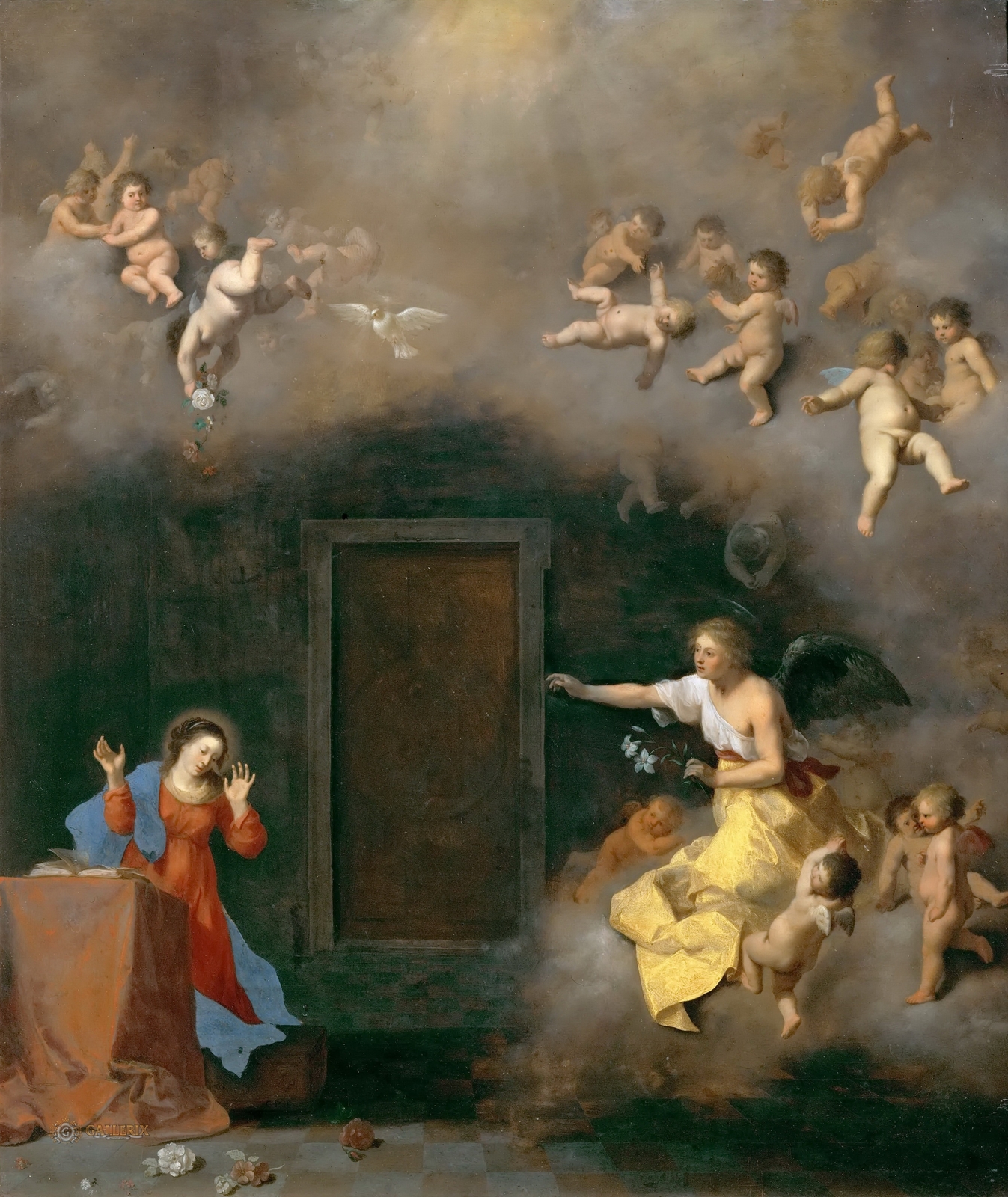
Cornelis Van Poelenburgh | Dutch Golden Age Landscape painter
A Dutch painter, well know for his landscape work, Cornelis van Poelenburgh (1586-1667) is mentioned as an artist who aspired towards styles of the masters, though this was praise, and not a belittling of his work. It is said that he strived to capture human figures as Raphael (1483-1520) the Italian master did and to paint landscapes as the Baroque master, Claude Lorrain did (1600-1688). These unique aspirations were also enhanced by an influence from the German born, Italian styled, innovator of landscapes, Adam Elsheimer (1578-1610).

Hoàng Nam | Professional photographer
Photographs of a young Vietnamese photographer who’s artistic nickname is Hoangnamphoto are rather pleasurable.
He adores nature, landscapes and his Vietnam.
Thanks to his photos, we get to know this far away country, and the way that people live in it, but also we get to enjoy in the perfectly captured artistic side of it.

Paolo Fiammingo | Mannerist painter
Pauwels Franck known in Italy as Paolo Fiammingo and Paolo dei Franceschi (c. 1540 - 1596), was a Flemish painter, mainly of landscapes with mythological and religious scenes, who was active in Venice for most of his life.
He was likely born c. 1540 but his birthplace is not known. He became a member of the Antwerp Guild of Saint Luke in 1561. He is recorded in Venice from 1573 but was likely an assistant in Tintoretto’s workshop there already in the 1560s. He worked in Venice for the rest of his career. He opened a successful studio in Venice, which received commissions from all over Europe.

Gennaro Greco | Imaginary Architecture /Landscape painter
Gennaro Greco (1663-1714) also known as "Il Mascacotta", was an Italian painter of Figures, portraits, landscapes, landscapes with figures, architectural views, murals and veduta. Greco was a specialist in imaginary views (vedute ideate) showing architectural ruins.
Greco was born and worked in Naples.
He is described by Dalbono as a painter of views of mutilated ruins.
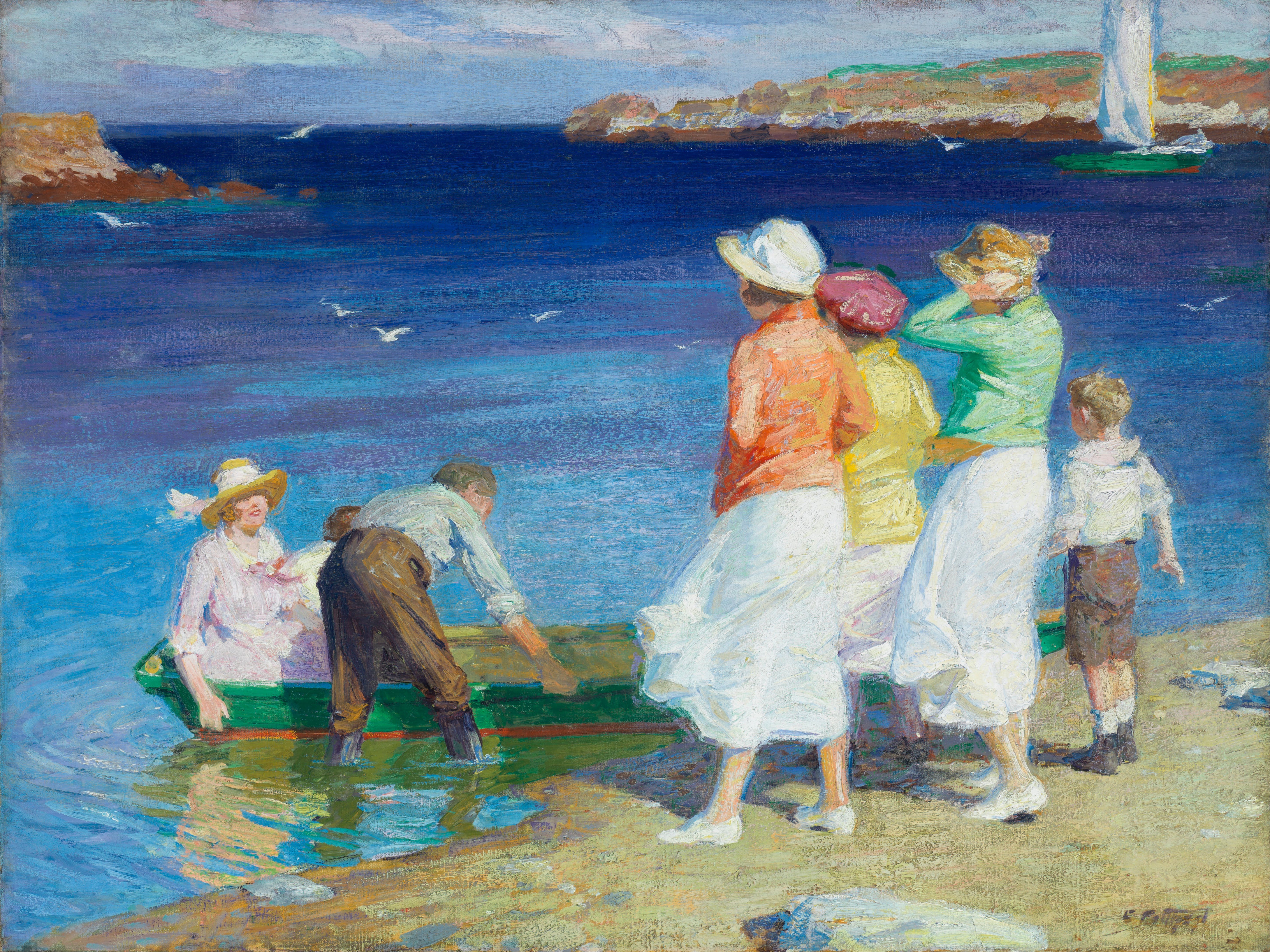
Edward Henry Potthast | Impressionist painter
Edward Henry Potthast (1857-1927) was an American Impressionist painter. He is known for his paintings of people at leisure in Central Park, and on the beaches of New York and New England.
Edward Henry Potthast was born on June 10, 1857 in Cincinnati, Ohio to Henry Ignatz Potthast and Bernadine Scheiffers.
Starting in 1870 he studied art at the McMicken School in Cincinnati and in 1873 he started working at the Strobridge Lithography Company.
From June 10, 1879 to March 9, 1881, Potthast studied under Thomas Satterwhite Noble, a retired Confederate Army captain who had studied with Thomas Couture in Paris.

Dirck van Delen | Architecture Fantasy painter
Dirck van Delen or Dirck Christiaensz van Delen (c.1605, Heusden - May 16, 1671, Arnemuiden) was a Dutch Golden Age painter who specialized in architectural painting.
According to the early artist biographer Arnold Houbraken, van Delen was born in Heusden. It is not clear with whom he apprenticed and both Frans Hals and Hendrick Aerts (who also specialized in architectural paintings) have been proposed as his masters. More plausible are studies under Pieter van Bronckhorst and/or Bartholomeus van Bassen in Delft.

Franz Christoph Janneck | Baroque painter
Franz Christoph Janneck (3 October 1703, Graz - 13 January 1761, Vienna) was an Austrian painter in the Baroque style.
He specialized in genre scenes, often with mythological themes, as well as some portraits, landscapes and religious works.

Eleanor Fortescue-Brickdale | Pre-Raphaelite painter
Eleanor Fortescue Brickdale (1871-1945) was a well respected illustrator and painter of her day. In 1896, she created a lunette titled Spring, which was used in the Royal Academy Dining Room. In 1902, she had the honor of becoming the first female member of the Institute of Painters in Oils. She illustrated many books such as Poems by Tennyson, 1905, W.M. Canton, Story of St. Elizabeth of Hungary, 1912, and Calthorp, A Diary of an 18th Century Garden, 1926, to name a few. In 1919, Eleanor Fortescue Brickdale's Golden Book of Famous Women was published by Hodder and Stoughton, which was a compilation of stories about some of the most famous women in history and legend as written by some of the most famous authors in history such as William Shakespeare, Lord Tennyson, Charles Dickens, Edgar Allan Poe and John Keats among others.
Although this book contains no introduction to explain whose inspiration it was to put the book together or who chose the content, it seems clear from the title that Brickdale must have been the mastermind behind it.

Kuzma Petrov-Vodkin | Symbolist painter
Kuzma Sergeyevich Petrov-Vodkin / Кузьма Сергеевич Петров-Водкин (born October 24 [November 5, New Style], 1878, Khvalynsk, Saratov oblast, Russian Empire - died February 15, 1939, Leningrad, Russia, U.S.S.R. [now St. Petersburg, Russia]), Russian painter who combined many traditions of world art in his work and created an original language in painting that was both deeply individual and national in spirit.
Petrov-Vodkin’s birthplace was a small town on the banks of the Volga River, where he was born into the family of an impoverished cobbler.
He spent his youth there, living in harsh conditions reminiscent of those described by Maksim Gorky in My Universities.
But his talent overcame his provincial surroundings, and his determination to be an artist led him first to art classes in Samara (1893-95) and then to the Moscow School of Painting, Sculpture, and Architecture (1897-1904), where he studied with painter Valentin Serov.

Genaro Pérez Villaamil | Romantic Historical-scenes painter
Born in Ferrol on 3 February 1807, Genaro Pérez Villamil (1807-1854) was still a boy when he enrolled at the Military Academy in Santiago de Compostela, but after moving to Madrid with his family he abandoned the military for literary studies. In 1819 he was wounded when fighting against the absolutist troops of King Ferdinand VII and taken to Cadiz as a prisoner of war and it was there that he began to develop his artistic skills. During those years he may have made a trip to England with his brother Juan, also a painter, and in 1830 the two of them travelled to Puerto Rico, where they decorated the Tapia theatre in San Juan.

Eugenio Lucas Villaamil | Genre painter
Eugenio Lucas Villaamil (Madrid, 1858 - Madrid, 1918) also known as Lucas "the younger", was born in Madrid on 14 January 1858 to the painter Eugenio Lucas Velázquez and Francisca Villaamil. Until only a few years ago the information we had about his life was almost as vague as what is known about his work.
After initially training in his father’s studio as a boy, he furthered his studies at the Special School of Painting in Madrid and took part in the National Exhibitions of Fine Arts three times. In 1876 he entered two works: Italianas ("Italian Women") and Mendigo ("Beggar"); in 1881 he submitted a small picture entitled Galanterías en el siglo XVIII ("Gallantries in the 18th Century"); and in 1884 the watercolour Después de la fiesta. Dibujo de Serra ("After the Fiesta. Drawing of Serra") and the oil painting Cuestión de honor ("A Question of Honour").

John Singer Sargent | Art in detail
"A portrait is a picture of a person with something wrong with the mouth" - John Singer Sargent
John Singer Sargent (January 12, 1856 - April 14, 1925) was an American artist, considered the "leading portrait painter of his generation" for his evocations of Edwardian era luxury.
During his career, he created roughly 900 oil paintings and more than 2,000 watercolors, as well as countless sketches and charcoal drawings.
His oeuvre documents worldwide travel, from Venice to the Tyrol, Corfu, the Middle East, Montana, Maine and Florida.

John William Godward (1861-1922)
John William Godward è stato un pittore Inglese, operante nella fase finale del periodo Pre Raffaellita / Neo-classico.
Godward era un pittore molto vicino a sir Lawrence Alma-Tadema (era considerato il suo pupillo).
Godette di vasta popolarità, ma il suo stile pittorico risultò superato e perse i favori del pubblico e della critica con l'avvento delle avanguardie.
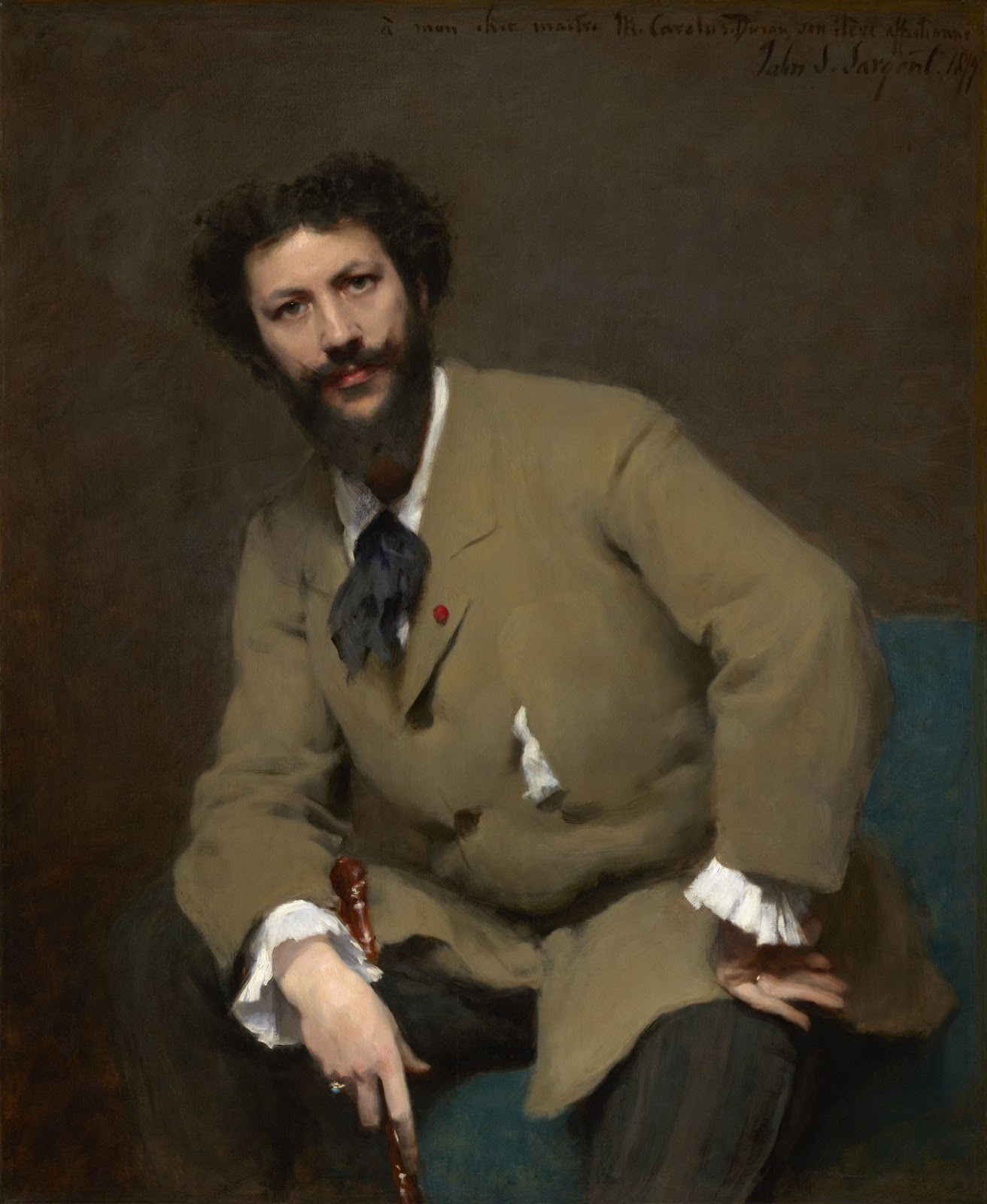
John Singer Sargent | Portrait of Carolus-Duran, 1879
Charles-Émile-Auguste Durand (1837-1917), known as Carolus-Duran, was a celebrated figure in the world of Parisian art and theater. Known for his elegant society portraits, he was also highly influential as a teacher.
Sargent entered Duran’s studio in 1874 and became his star pupil. Duran’s approach was radical: he encouraged his students to draw and paint simultaneously, using a loaded brush. In this stylish portrait, which received an award when it was shown at the Paris Salon in 1879, Sargent pays homage to his teacher by embracing his fluid technique. The affectionate dedication to Duran, inscribed in French at the upper right, announces Sargent’s artistic pedigree but also caused some contemporary viewers to remark that the student had surpassed the master. | © The Metropolitan Museum of Art
Iscriviti a:
Post (Atom)








